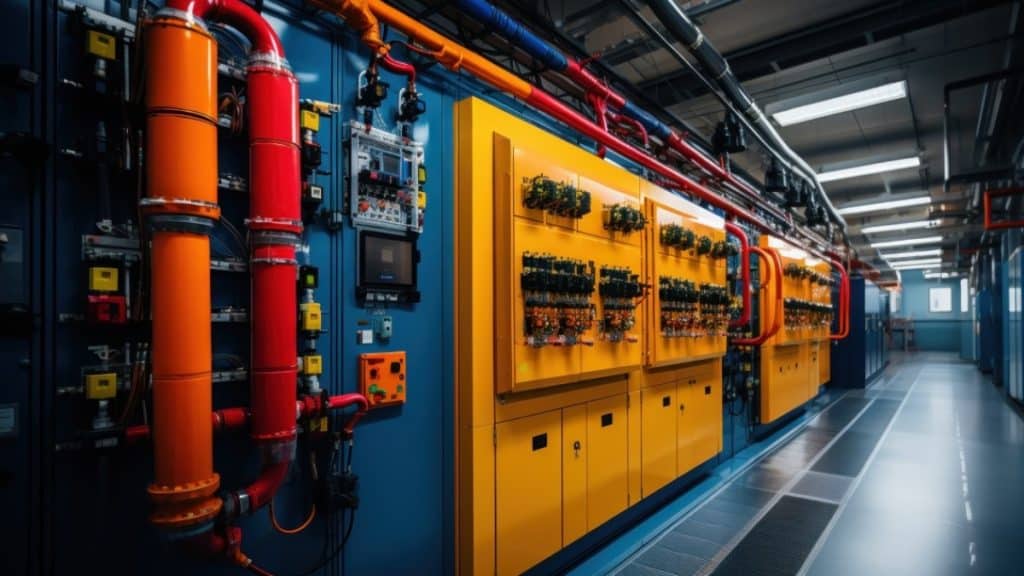In modern manufacturing, power distribution methods can greatly impact efficiency and safety. Overhead power distribution systems stand out for their ability to meet the needs of today’s fast-paced industrial environments. By keeping power lines above workspaces, these systems avoid many of the challenges posed by traditional underground wiring. Many industries have adopted overhead systems, highlighting their importance in modern manufacturing.
Overhead power distribution offers numerous benefits for factories and production facilities. Its flexible designs enhance efficiency and safety, making it ideal for active operations. Systems like those from Track Busway further improve adaptability and efficiency. Additionally, these systems are cost-effective, easy to maintain, and compatible with new manufacturing technologies, making them a smart choice for modern industrial environments.
Flexibility in Manufacturing Space Design
Designing a manufacturing space requires careful attention to workflow and efficiency. Overhead power distribution offers great flexibility, allowing facilities to easily adjust layouts as needs change. With power lines above the workspace, changes can be made without the challenges of underground systems. This makes it easier to expand production lines or shift resources as needed.
The flexibility of overhead power distribution goes beyond just installation. As businesses grow, these systems can be quickly reconfigured, allowing for fast responses to market changes or new technologies. Minimal disruption during these adjustments helps keep productivity high, improving a facility’s ability to adapt to new projects or trends.
Improved Energy Efficiency and Cost Savings
Minimizing power losses greatly improves operational efficiency in manufacturing. Overhead power distribution systems help by providing direct paths for electricity, reducing the distance the current must travel. Unlike traditional underground methods, which can cause energy loss due to longer wire lengths and obstacles, overhead systems offer a clear, unobstructed route. This results in more efficient energy use, with less electricity lost during transit.
Improved energy efficiency leads to meaningful cost savings. A medium-sized manufacturing plant can save thousands of dollars annually in electricity costs by reducing unnecessary power loss. For facilities operating on tight profit margins, these savings contribute to more predictable expenses, simplifying budgeting and supporting long-term financial planning.
Heightened Safety in the Workplace
Manufacturing environments focus on safety to protect workers and improve productivity. Overhead power distribution increases safety by keeping electrical lines above ground, avoiding the risks tied to floor-level wiring. This setup reduces trip hazards, lowering the chance of accidents in busy facilities. Employees can move freely without worrying about tangled wires or obstacles.
Accidents involving machinery or vehicles can harm both workers and the facility’s overall efficiency. Overhead systems help prevent power lines from getting tangled with machinery, creating a clear and open workspace. This separation promotes safety, allowing workers to focus on their tasks without worrying about exposed wires.
Cost-Effectiveness and Maintenance Savings
Installing and maintaining overhead power distribution systems is much more cost-effective compared to traditional underground setups. Unlike underground systems, which require extensive excavation and costly groundwork, overhead installations involve minimal digging, resulting in lower upfront costs and faster project timelines. For example, an overhead system installation can save up to 30% in labor expenses alone, according to industry reports.
Maintenance is another area where overhead systems excel. Since power lines are visible and easily accessible, routine inspections and repairs are quicker and less disruptive. Technicians can address issues without specialized equipment or time-consuming excavation, reducing service downtime by as much as 50%.
Adapting to Technological Advances in Manufacturing
The adaptability of overhead power distribution systems extends to modern technology integration, meeting the needs of automated manufacturing processes. As production facilities adopt automation, including robotics and advanced control systems, overhead systems adjust quickly. Their ability to easily upgrade or modify means power distribution can progress with manufacturing technologies without needing major changes.
Smart technologies often require specific power setups that differ from traditional systems. Overhead systems can be configured to match the unique power needs of advanced equipment, handling varying voltage and specialized usage. This flexibility creates an environment that supports technological progress.
Overhead power distribution provides key benefits for modern manufacturing, offering flexibility, energy efficiency, and safety. These systems can quickly adapt to changing production needs, allowing for easy reconfiguration with minimal disruption. By reducing power losses and cutting maintenance costs, overhead systems help businesses save on operational expenses while improving energy efficiency. Additionally, their design keeps electrical lines above ground, reducing trip hazards and the risk of accidents. As manufacturing embraces automation and new technologies, overhead power distribution’s flexibility makes it an essential solution for maintaining efficiency, safety, and cost-effectiveness in today’s industrial environment.
